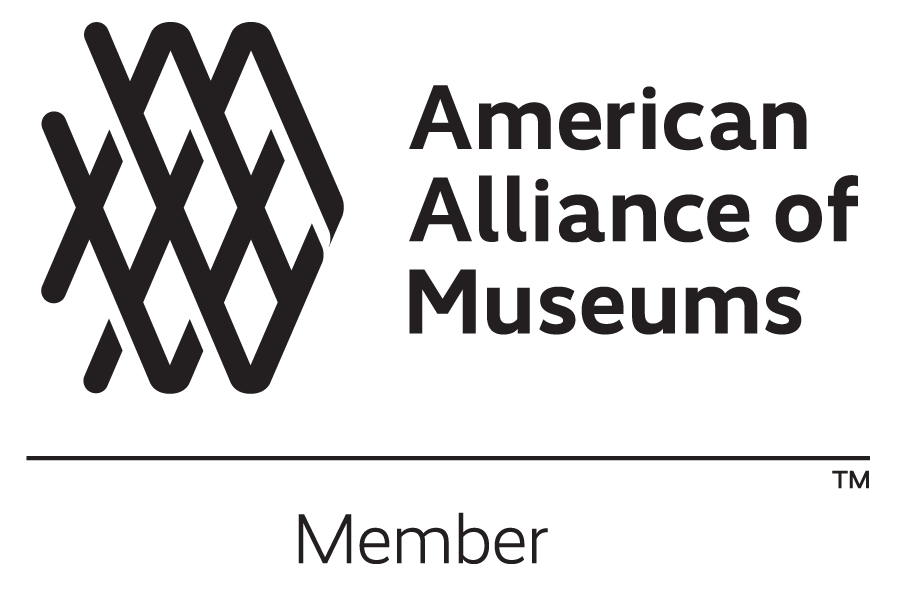Christmas in Colonial and Revolutionary America
by Jack Campbell
In the spirit of the season, Special Programs & Engagement Intern Jack Campbell explores the festivities and traditions of Christmas in the Revolutionary Era.
Christmas has a long history in America, dating back to the earliest days of colonization. Today, it is celebrated across the United States, filled with traditions, family gatherings, and religious observations. During the mid-18th century though, the celebration of Christmas primarily relied on the region in which one found themselves. In Puritan New England, Christmas celebrations were often frowned upon and harshly discouraged, compared to the southern colonies, where it was more widely celebrated and enjoyed. The middle colonies and their diverse inhabitants had varied reactions to the holiday with more localized observations. The religiosity of the holiday was particularly focused on by those who did celebrate it and the reason why certain religious groups did not. While the holiday may not have been as extravagantly celebrated as it is today, it was nonetheless an important day to many in early America, as well as a source of contention for others.
While there were non-Christians who came to and lived in the British colonies, the majority of colonists were Christian, and the majority of those Christians were Protestant. Different groups congregated in different regions, giving these areas their own unique identities and practices. This included different ways of celebrating or not celebrating a holiday such as Christmas, which certain religious groups often shunned despite its Christian background. For example, Massachusetts was dominated by the very conservative Puritans, who were absolutely against the holiday. It has even been suggested that it was the day that the Puritans saved their greatest contempt for.[1] They went so far as making its celebration illegal at one point, and the day would often pass as any other day would.[2]
Puritan objections to Christmas were so strong that historian George Curtis even theorized that they saw Santa Claus as the “anti-Christ” and that they viewed the holiday negatively as a Catholic tradition.[3] Though this was referring to 19th century Puritans, as the first known reference of Santa Clause in the colonies appeared in 1773, the inference is still strong.[4] The fact that Puritan ministers would often preach vehemently against the celebration of the holiday, seeing no scriptural reasons for celebrating it, as well as viewing it as a tradition rooted in paganism is further proof of this contempt.[5] The famed minister Cotton Mather would even say that Jesus Christ was dishonored more in the twelve days of Christmas than in the entire preceding twelve months.[6] Massachusetts’ complicated relationship with Christmas would continue even as the Puritans lost power and it was slow to catch on to the holiday’s popularity as compared to other parts of the country. Nonetheless, some prominent citizens did at least acknowledge the day, with future President John Adams among them, noting its passing in diary entries at different points of his life.[7]
The Puritans were not alone in their antagonism towards Christmas. The Quakers of Pennsylvania were also against celebrations of the day, likely for the same reasons as the Puritans. Often some members of these religious denominations, such as Calvinists, would branch out to other religious sects and their Christmas services that celebrated the day.[8] This can be argued as being an impetus behind the relaxing of anti-Christmas rules among groups as they feared losing their congregations. Changes of the heart also came as groups became more and more exposed to Christmas celebrations and were drawn in by the enjoyment they seemed to provoke.[9]
Just because there was some opposition to the celebration of Christmas in Pennsylvania and the other middle colonies does not mean it was not enjoyed by others that lived there, though. This region was home to a variety of groups and cultures, many of which celebrated and enjoyed the day. While this diversity also meant that the celebrations were much more individualized and local, the holiday was still a part of the larger cultural experience of the region. For instance, the area was home to inhabitants of Dutch, German, and Huguenot descent in addition to those of English descent, and groups celebrated the day in their own way.[10] Outside of the Quakers, many of those English descendants celebrated the day as well, as it was a common celebration among Anglicans and some other Protestant groups that lived in the area. This variety meant that larger united celebrations were limited due to the differences of the cultures, but the individual communities would have them.
To find the greatest regional embracement of the Christmas holiday, one would have to look to the southern colonies. It is true that certain groups that lived on the frontiers of this region were not major celebrators of the day.[11] But, on the whole, the south is where the holiday flourished most in colonial and revolutionary America. These Christmas celebrations were still quite different from the ones we know today, but they nonetheless could be festive celebrations. Virginia, in particular, seemed to have emphasized the day.
Throughout the colonies, a common Christmas tradition was the firing of muskets and cannons in celebration.[12] This would have occurred especially in those southern colonies. While celebrations varied from plantation to plantation, we know that both Thomas Jefferson and George Washington celebrated the day. After the Revolution, Jefferson mentioned his grandson joyfully exclaiming “Merry Christmas” in an 1809 letter, while a much younger Jefferson referred to the day as one of “greatest mirth and jollity” for many in 1762.[13] In George Washington’s case, though specifics of his celebrations are unknown, we know that the Christmas season was celebrated. In particular, the Twelve Days of Christmas was observed, as it often was throughout the colonies, and he was married to his wife Martha on January 6, the twelfth day of Christmas and the Feast of the Epiphany.[14] Washington also participated in fox hunts, as was commonly done at that time of the year in Virginia as part of the festivities.[15]
One particularly compelling Virginia Christmas tradition shows just how differently the day was celebrated there than in other colonies. In 1702, at the College of William & Mary, tradition had dictated that students would prevent faculty from entering the school as a means of starting Christmas festivities. The school’s founder, the Reverend James Blair, was apparently not a fan of the practice and tried to force his way into the school. Blair recounted what happened next, saying that the students “presently fired off 3 or 4 Pistols & hurt one of my servants in the eye with a wadd as I suppose of one of the Pistols, while I press'd forward, some of the boys, having a great kindness for me, call'd out ‘for God's sake sir don't offer to come in, for we have shot, & shall certainly fire at any one that first enters.’”[16]
It is also important to note how the day passed for the enslaved of the colonies. Slavery existed in all the colonies before the American Revolution, and it remained prominent in some northern states for decades after the conclusion of the war. The southern colonies accounted for the majority of the enslaved population, and Christmas could mean different things for different enslaved people, in terms of their workload. For instance, at George Washington’s estate at Mount Vernon, enslaved house workers would have received extra work to accommodate additional guests that the Washington’s would have been hosting.[17] For other enslaved people, most notably those that did manual labor outdoors, the day and those immediately around it were often ones of rest before being forced back to their labor.[18]
Throughout the colonies, the religiosity of the holiday took precedence in almost all celebrations of Christmas. This included the southern colonies where most of the colonists were devout, Anglicans who saw the liturgical season of Advent, which leads to Christmas, as one of penitence and reflection.[19] No matter which of these varied religious groups, one part of the spiritual nature of the day came first. It was what came after that caused such dissension, with different groups having separate views of what they deemed appropriate. For some, such as the Puritans, Calvinists, and Quakers, this meant that no special observance of the day was appropriate. For others, such as Anglicans, Baptists, and Moravians, it was a day to be celebrated, with its religious meaning still being emphasized. A minority in the colonies, Roman Catholics, greatly celebrated the day and this was used by later Puritans who opposed the celebrations they saw as emblems of “popery.”[20]
When the Revolutionary War came, the fighting did not necessarily break for the holiday, and soldiers were not exchanging gifts. Most famously, Christmas saw George Washington’s crossing of the Delaware River and the attack on Trenton, New Jersey. Otherwise, fighting slowed during this time of year, not because of the holiday, but because of the weather. Joseph Plumb Martin, a Continental Army soldier who wrote a memoir detailing his service throughout the war, noted Christmas’ passing only as a means of giving a timeframe. No celebrations are mentioned.[21]
Christmas was celebrated much differently in the 17th and 18th centuries than it has been in the 20th or 21st centuries. Even among those who celebrated it outwardly and joyously, it was still much more subdued than it is today. Gifts were typically reserved just for children and servants if given at all. While Christmas’ religious meaning is still vital and is its most important aspect for so many, it still pales in comparison to the religious fervor attached to it in those early days of America. While some used religion to emphasize the day, others denounced it. It was marked by the firing of guns and church services. All of this is to say that Christmas mattered to many people in colonial and revolutionary America, but it was celebrated in a different way than it is today. There are certainly still some familiarities between the celebrations, but the observation of the day has certainly developed over the centuries.
Bibliography
“A Very Mount Vernon Christmas.” George Washington’s Mount Vernon. Mount Vernon Ladies’ Association. https://www.mountvernon.org/the-estate-gardens/mount-vernon-christmas/
Daniels, Bruce C. Puritans at Play: Leisure and Recreation in Early New England. (New York: St. Martin’s Press, 1995).
DeSimone, David. “Another Look at Christmas in the Eighteenth Century.” The Colonial Williamsburg Interpreter 16, no. 4 (Winter 1995-96). Retrieved from https://www.slaveryandremembrance.org/almanack/life/christmas/hist_anotherlook.cfm.
Martin, Joseph Plumb. Private Yankee Doodle: Being a Narrative of Some of the Adventures, Dangers and Sufferings of a Revolutionary Solider. Edited by George E. Scheer. (Eastern Acorn Press, 1993).
Olmert, Michael. “Williamsburg’s Long Christmas.” Colonial Williamsburg. Colonial Williamsburg Foundation. Retrieved from https://www.slaveryandremembrance.org/almanack/life/christmas/hist_longchristmas.cfm.
Renstad, Penne. Christmas in America: A History. (New York and Oxford, UK: Oxford University Press, 1995).
Weintraub, Stanley. General Washington’s Christmas Farewell: A Mount Vernon Homecoming, 1783. (New York: Free Press, 2003).
Footnotes
[1] Daniels, 89.
[2]DeSimone, “Another Look at Christmas.”
[3]Restad, 107.
[4]Restad, 45.
[5]Daniels, 89.
[6] Daniels, 89.
[7]“Decr, 25th. 1765. Christmas,” Founders Online, National Archives, https://founders.archives.gov/documents/Adams/01-01-02-0009-0005-0008; “Saturday 25th,” Founders Online, National Archives, https://founders.archives.gov/documents/Adams/03-01-02-0001-0002-0028; “25th.,” Founders Online, National Archives, https://founders.archives.gov/documents/Adams/03-01-02-0007-0014-0025.
[8]Restad, 30-31.
[9]Restad, 31.
[10]Restad, 9.
[11]DeSimone, “Another Look at Christmas.”
[12]Weintraub, 145.
[13]“Thomas Jefferson to John Wayles Eppes, 25 December 1809,” Founders Online, National Archives, https://founders.archives.gov/documents/Jefferson/03-02-02-0064; “From Thomas Jefferson to John Page, 25 December 1762,” Founders Online, National Archives, https://founders.archives.gov/documents/Jefferson/01-01-02-0002.
[14]Weintraub, 144.
[15]Weintraub, 144.
[16]Olmert, “Williamsburg’s Long Christmas.”
[17]“A Very Mount Vernon Christmas.”
[18]“A Very Mount Vernon Christmas.”
[19]DeSimone, “Another Look at Christmas.”
[20]Renstad, 107.
[21]Martin, 102, 107, 112, 147, 272.







